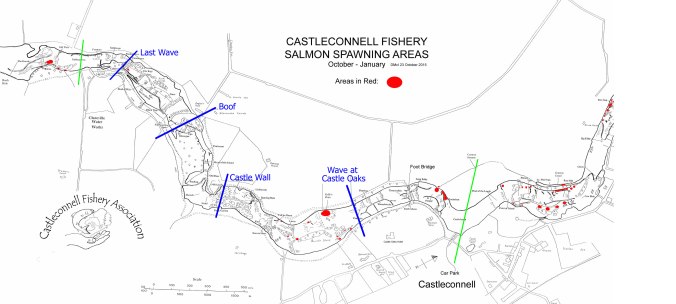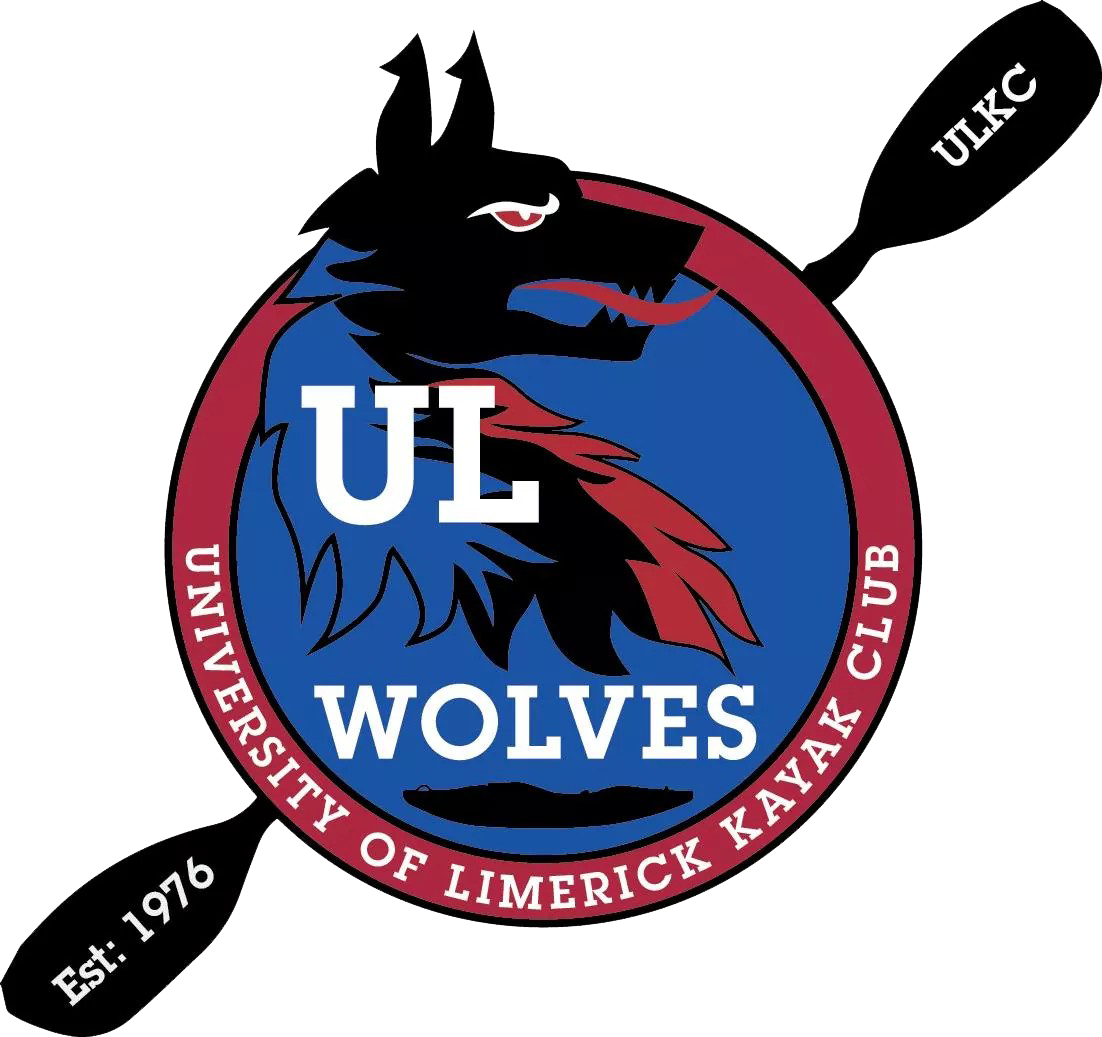Environment
At ULKC we try to put our best foot forward in trying to have less of an impact on our local environment.
Bio Security
- Drain water from watercraft.
- Inspect watercraft (inside and out) and other gear. Remove and safely dispose of all attached plant and animal material, mud or debris.
- Rinse and disinfect all gear thoroughly this should be followed by a 24 hour drying period. Milton can be used as a disinfectant, either make a solution or a spray. Or by washing gear in water over 40 degrees.
- Disinfecting kayaks/canoes/paddles with (Virkon contact committee / Milton Solution or power hose with hot water over 40 degrees Celsius this should be followed by a 24 hour drying period.
More information: stop the spread
Salmon Spawning Areas
The below map shows the salmon spawning areas on the river Shannon. Spawning happens between October and January and these areas should be avoided at these times.
- Get On and Get Off Marked in Green
- Play spots marked in blue
- Spawning areas in red
- Larger map click here

A description of the areas which affect normal paddling on Castleconnell run.
- River right after Castle Oaks Hotel
- River left above last wave before get out ( near metal spike before wave that runs towards the wall)
General guidelines: River paddlers should be aware of fish spawning; in particular what it is, where and when it happens and how we can avoid interfering with it. Female fish lay their eggs and male fish fertilise those eggs in the gravel beds of rivers throughout Ireland. Fish seek out gravel river beds for spawning, so this is not an issue in muddy rivers. The reason for this is that the eggs rest in the gaps between the pieces of gravel and stay there until the young fish hatch. The movement of water over the gravel provides them with the necessary flow of oxygen to help them through the early stages of their life cycle. Salmon and sea trout generally spawn between the months of October to early January in both the main river and in the tributaries of almost all Irish rivers, although earlier and later instances are sometimes reported.
When paddling in the autumn and early winter you should be particularly on the look out for gravel river beds, especially when you are getting in or out of your boat. You can avoid causing any problems in the spawning season by:
- Not standing in the water when there is a gravel river bed
- Being aware of the increased risk of making contact with the gravel river bed in times of low water
- Avoiding contact between your paddle and the gravel river bed, especially when getting in and out of your boat
- Avoiding contact with your boat and the gravel river bed, especially by not dipping the stern or cartwheeling when there is insufficient depth of water
- The use of a pole to propel an open canoe should be done with caution at this time of year reverting to a paddle on sections of river with a gravel bed
- Following any local guidance in terms of preferred places to launch or climb out
- Remembering the sensitive time of year for fish spawning, other fish have different spawning times so local knowledge is useful
Water Access Code of Practice
Canoeing Ireland recommends that canoeists endeavour to adhere to the below Code of Conduct to maintain good relationships with land owners and other water users. Special consideration needs to be given to the impact of canoeing on the natural environment and other water users.
- Minimise your impact on the natural environment at all times particularly make efforts to reduce river bank erosion at access and egress points.
- Take only pictures and leave only ripples. Leave no mark of your passing, leave no rubbish behind and whenever possible pick up any rubbish you see along the way.
- Be sensitive when parking, changing, entering and exiting the water.
- Observe wildlife from a distance. Do not follow or approach. Avoid wildlife during sensitive times: mating, nesting, raising young, or winter.
- Maintain positive, co-operative relationships with other water users and riparian landowners as this is important for the future of canoeing and the future of canoeing environments themselves.
- At entry and egress points behave in a friendly, positive manner towards owners. Be mindful of the time you are spending occupying the launch or take-out area and that you do not unfairly restrict opportunities for others.
Leave No Trace Ireland
- Plan Ahead and Prepare
- Be Considerate of Others
- Respect Farm Animals and Wildlife
- Travel and Camp on Durable Surfaces
- Leave What You Find
- Dispose of Waste Properly
- Minimise the Effects of Fire
To learn more about the Leave No Trace, visit www.leavenotraceireland.org.
